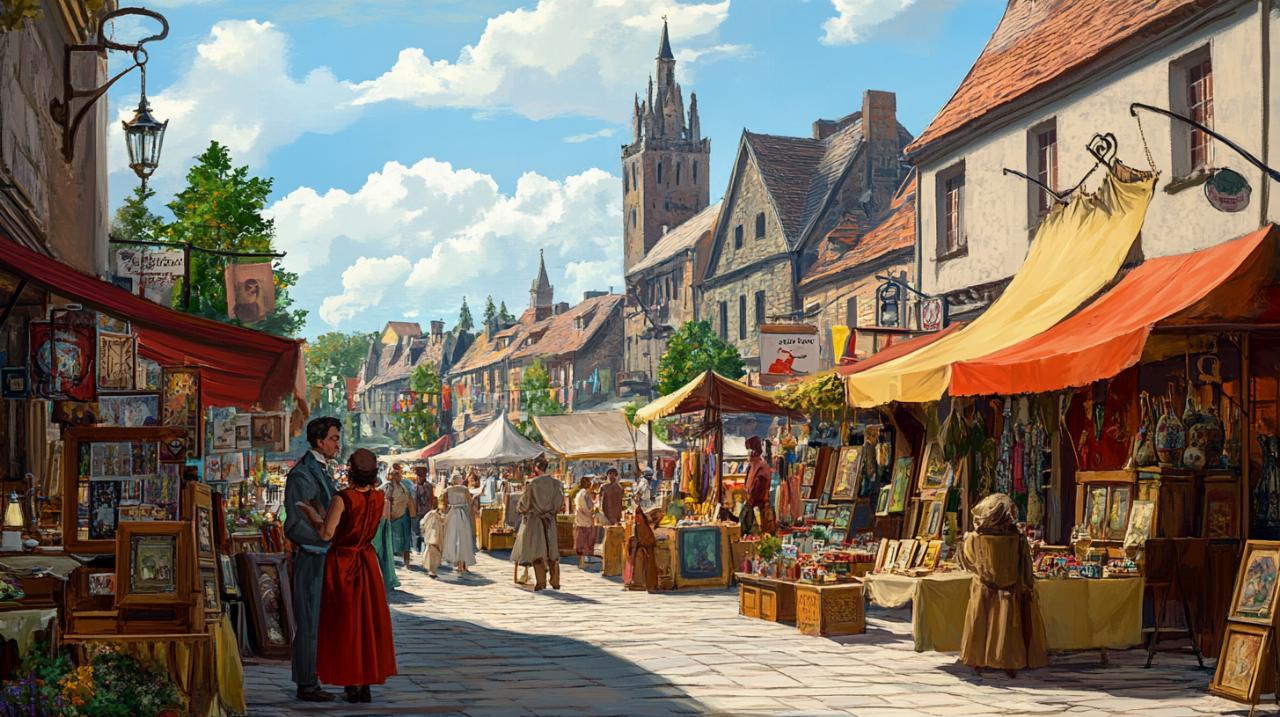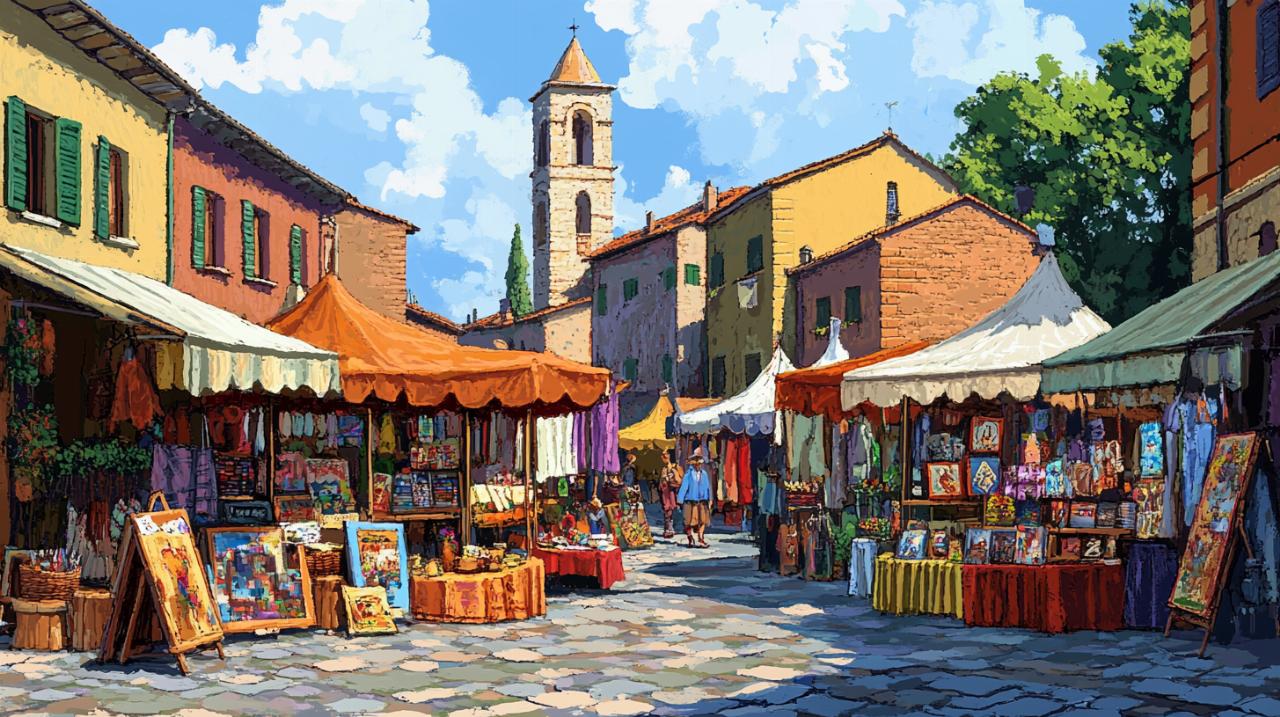European festivals offer a captivating window into the continent’s diverse traditions, where the celebration of local customs and communal gatherings creates unforgettable experiences for travellers and locals alike. From the colourful parades of Venice to the bustling Christmas markets of Vienna, these events showcase the vibrancy and richness of regional culture. The blend of music, food, and craftsmanship forms the heart of these celebrations, inviting visitors to immerse themselves in centuries-old customs whilst discovering the unique character of each destination. Whether attending a folk festival in Croatia or exploring the vibrant stalls at a traditional market in Spain, the continent presents an extraordinary tapestry of cultural expressions that connect communities and preserve their heritage.
The rich tapestry of traditional craftsmanship across european festival markets
Traditional craftsmanship remains a cornerstone of European festivals, where artisan markets and cultural heritage are celebrated with pride and passion. Spring and autumn emerge as particularly rewarding seasons for those seeking to experience authentic local culture, as these periods bring a wealth of cultural events including markets, outdoor performances, and guided tours. Artisans gather to display their skills and wares, offering visitors the chance to witness time-honoured techniques passed down through generations. From handwoven textiles to intricate metalwork, these festival markets serve as living museums, preserving practices that might otherwise fade from memory. The emphasis on quality and authenticity distinguishes these gatherings from ordinary commercial ventures, creating spaces where the value of handmade goods is truly appreciated.
Discovering time-honoured artisan techniques at continental celebrations
Across the continent, festivals provide a platform for craftspeople to demonstrate their expertise and share their knowledge with curious audiences. In Spain, medieval fairs such as the Weddings of Isabel de Segura in Teruel during February transport visitors back in time, with artisans dressed in period costume showcasing traditional methods of pottery, leatherworking, and metalcraft. Communities throughout Aragon, Castilla y León, and Andalucía actively promote Spanish crafts through historical events that recreate the atmosphere of bygone eras. Similarly, Ireland and Scotland host craft fairs featuring Celtic-inspired items alongside traditional music performances, with towns like Santiago de Compostela and Lugo connecting Galician heritage with ancient Celtic traditions. Museums throughout Toledo, Segovia, and Granada enhance these experiences by offering live artisan demonstrations that complement regional fairs, allowing visitors to observe the meticulous care and skill required to create these beautiful objects.
How festival markets preserve and showcase regional craft traditions
The preservation of regional craft traditions relies heavily on the continued support and interest generated by festival markets. Paris and Marseille exemplify this commitment through their renowned flea markets and antique fairs, where visitors can uncover unique historical items that tell stories of past generations. The Saint-Ouen flea market in Paris features countless stalls selling vintage furniture, books, and jewellery, each piece reflecting the craftsmanship and aesthetic sensibilities of its era. Marseille enhances its offerings with themed fairs incorporating music and food in the old port and main squares, creating a festive atmosphere that celebrates both tradition and community. Traditional markets such as La Boquería in Barcelona and Mercado de San Miguel in Madrid go beyond simple commerce by offering guided tours with tastings, educating visitors about the origins and cultural significance of local products. These markets serve as vital links between past and present, ensuring that traditional skills remain relevant and valued in contemporary society.
Cultural Heritage and Community Identity in European Festival Gatherings

European festivals function as powerful expressions of community identity, bringing together residents and visitors to celebrate shared values and historical narratives. The role of these gatherings extends far beyond entertainment, serving as crucial occasions for transmitting cultural knowledge and reinforcing social bonds. Events like Oktoberfest in Munich, which welcomes millions of guests who consume vast quantities of beer whilst enjoying traditional music and food, demonstrate the enduring appeal of communal celebrations rooted in regional customs. Similarly, the Carnival of Venice captivates audiences with its elaborate masks and costumes, continuing traditions that date back centuries. Edinburgh’s Hogmanay festivities mark the New Year with events that draw upon Scottish heritage, whilst Amsterdam’s King’s Day sees hundreds of thousands of people flooding the streets in a nationwide celebration of Dutch identity. These festivals provide opportunities for communities to showcase their distinctive characteristics whilst welcoming outsiders to participate in cherished traditions.
The Role of Artisan Markets in Maintaining Local Cultural Narratives
Artisan markets play an indispensable role in maintaining local cultural narratives by providing tangible connections to regional histories and traditions. During spring, parks and plazas throughout Seville, Valencia, and Bilbao host international events featuring craft workshops that bring together artisans from across Europe, fostering cultural exchange and mutual appreciation. Historical gardens and main squares become venues for poetry readings, outdoor films, local markets, and traditional games, creating multifaceted experiences that celebrate the richness of European culture. Hondarribia in Gipuzkoa exemplifies this approach with its medieval festival every June, where the entire town transforms into a living history exhibit. Guided tours offered during these events help visitors discover hidden stories and traditional crafts embedded within towns and cities, revealing layers of meaning that might otherwise go unnoticed. Museums complement these efforts by mounting craft exhibitions that coincide with regional fairs, providing context and depth to the artisanal work on display. The result is a comprehensive cultural experience that educates whilst entertaining, ensuring that local narratives remain vibrant and accessible to new generations.
Celebrating european diversity through festival craft traditions
The diversity of European cultures finds expression in the varied craft traditions showcased at festivals throughout the continent. Barcelona, Madrid, and Valencia excel at blending classic and modern culture in their events, with venues like Zaragoza’s Aljafería Palace and Seville’s Alcázar hosting jazz and rock concerts that juxtapose contemporary sounds with historical architecture. Cultural clubs and theatres in Madrid and Barcelona present plays and dance shows infused with historical themes, demonstrating how traditional narratives can be reinterpreted for modern audiences. Historic buildings and parks serve as perfect backdrops for music and theatre, particularly during April when the weather invites outdoor performances. The Cambridge Folk Festival, running since its inception decades ago, represents the enduring appeal of traditional music, whilst events like Zagreb Folk Fest and Øya Festival attract thousands of music lovers who appreciate both heritage and innovation. Christmas markets in Vienna, numbering over twenty across the city, offer seasonal foods and crafts that reflect Austrian traditions, whilst the Lord Mayor’s Show in London continues a tradition dating back to the Tudor period. These celebrations collectively illustrate how festival craft traditions serve as bridges between different cultures, fostering understanding and appreciation whilst highlighting the unique contributions each region makes to the broader European cultural landscape. By participating in these events, visitors gain insight into the values, aesthetics, and historical experiences that shape local identities, creating memories that endure long after the festival has ended.

